Themed collection Emerging Investigator Series

Engineering the interaction of short antimicrobial peptides with bacterial barriers
Designing short antimicrobial peptides and tuning their interaction with bacterial barriers.

Mol. Syst. Des. Eng., 2024,9, 541-560
https://doi.org/10.1039/D4ME00021H
Early detection of SARS-CoV-2 with functionalized gold and molecularly imprinted polymeric nanoparticles: a mini review
Numerous tests have been developed for early clinical detection of the novel coronavirus, COVID-19, including RT-PCR, rapid PCR, laminar flow tests, and large-scale decentralized screening of SARS-CoV-2 in a point-of-care format.

Mol. Syst. Des. Eng., 2023,8, 1337-1354
https://doi.org/10.1039/D3ME00131H
Molecular design of protein-based materials – state of the art, opportunities and challenges at the interface between materials engineering and synthetic biology
Recombinant DNA technology allows us to generate new nature-inspired structural proteins with monomer-level control. These proteins can be used for the manufacture of materials with applications in healthcare, textiles or adhesives, to name a few.

Mol. Syst. Des. Eng., 2024,9, 1187-1209
https://doi.org/10.1039/D4ME00122B
Fabrication of a photothermal antibacterial platform for bacterial infectious skin wound healing: a review
Antibiotics are the main strategy to treat bacterial infections, but can cause bacterial resistance. We comprehensively summarize work on the fabrication of photothermal antibacterial platforms for bacterial infectious skin wound healing.

Mol. Syst. Des. Eng., 2024,9, 800-813
https://doi.org/10.1039/D4ME00010B
Recent advances and emerging opportunities in rapid thermal annealing (RTA) of polymers
A classic technique in semiconductors but new to polymers, rapid thermal annealing (RTA) offers numerous opportunities in polymer processing.
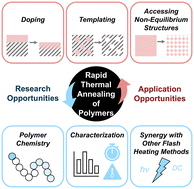
Mol. Syst. Des. Eng., 2023,8, 701-712
https://doi.org/10.1039/D2ME00283C
Recent advances in software tools for adsorption science and engineering
We provide overviews of recent developments in the software tools for both molecular and process simulations for adsorption science and engineering.
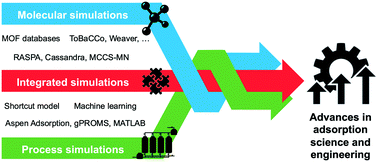
Mol. Syst. Des. Eng., 2022,7, 686-701
https://doi.org/10.1039/D2ME00036A
Design and engineering of graphene nanostructures as independent solar-driven photocatalysts for emerging applications in the field of energy and environment
Graphene and its derivatives are used as metal-free photocatalysts because of their fascinating optoelectronic properties which can further be improved by chemical doping for advanced functional applications in the field of energy and environment.
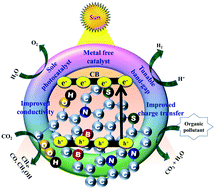
Mol. Syst. Des. Eng., 2022,7, 213-238
https://doi.org/10.1039/D1ME00179E
Click-functionalized hydrogel design for mechanobiology investigations
This review article covers the use of click chemistries toward the design of dynamic and instructive hydrogels for understanding cell mechanobiology.
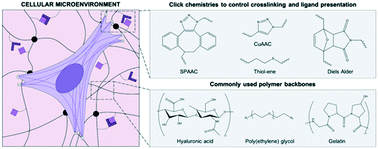
Mol. Syst. Des. Eng., 2021,6, 670-707
https://doi.org/10.1039/D1ME00049G
Electrochemically mediated deionization: a review
A review detailing existing electrode materials, cell architectures, and charge transfer mechanisms related to electrochemically driven desalination and selective element extraction in aqueous environments.

Mol. Syst. Des. Eng., 2021,6, 25-51
https://doi.org/10.1039/D0ME00090F
A Zn(II) pillared-layer ultramicroporous metal–organic framework with matching molecular pockets for C2H2/CO2 separation
A pillar-layered ultramicroporous MOF material featuring a C2H2-matching cavity was reported to efficiently separate C2H2 from C2H2/CO2 mixtures.

Mol. Syst. Des. Eng., 2024,9, 724-728
https://doi.org/10.1039/D4ME00066H
Water harvesting properties of a zwitterionic metal–organic framework
A nanoporous zwitterionic metal–organic framework is accessed for its atmospheric water harvesting properties due to its strong Lewis acidity and water stability. Findings show high cycling output and unique hydrochromic behavior.

Mol. Syst. Des. Eng., 2023,8, 580-585
https://doi.org/10.1039/D2ME00284A
Tailoring 6FDA-based click cross-linked membranes: modular synthesis and tunable gas separation
Covalent “click” cross-linking of 6FDA-based membranes has been demonstrated via thiol-ene reaction. The membranes exhibit systematic changes in gas separation.
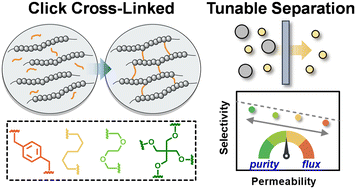
Mol. Syst. Des. Eng., 2023,8, 32-38
https://doi.org/10.1039/D2ME00215A
Design of carbon–ceramic composite membranes with tunable molecular cut-offs from a carboxylic benzoxazine ligand chelated to silica–zirconia
This study presents a concept that focuses on the structure design of preceramic resin precursors by the sol–gel method for fabricating carbon–ceramic molecular sieving membranes.
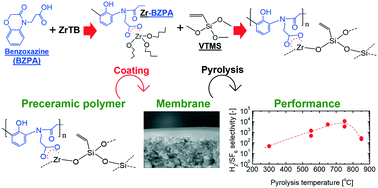
Mol. Syst. Des. Eng., 2022,7, 1030-1038
https://doi.org/10.1039/D2ME00078D
Accessing accelerated molecular diffusion by nanopore alignment in a MOF thin film
By aligning the pore orientation in the ZIF-8 thin film molecular transport diffusivity could be enhanced by 2-fold as compared to a mixed orientation ZIF-8 thin film.
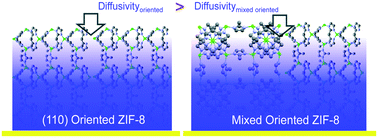
Mol. Syst. Des. Eng., 2022,7, 873-877
https://doi.org/10.1039/D2ME00091A
Improving high rate cycling limitations of thick sintered battery electrodes by mitigating molecular transport limitations through modifying electrode microstructure and electrolyte conductivity
Mitigating molecular transport limitations in thick sintered battery electrodes with electrolyte and microstructure design.
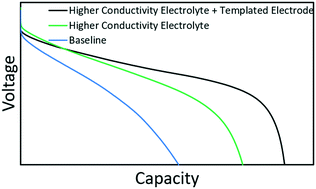
Mol. Syst. Des. Eng., 2021,6, 708-712
https://doi.org/10.1039/D1ME00082A
A first-principles examination of the ice–cellulose interface: towards bioinspired antifreeze design
Ab initio calculations show cellulose prefers binding to ice in a tetrahedral coordination providing a molecular design strategy for cellulose-based antifreeze materials.

Mol. Syst. Des. Eng., 2026, Advance Article
https://doi.org/10.1039/D5ME00137D
Evaluating the density of organic compounds at variable temperatures by a norm descriptor-based QSPR model
A robust QSPR model using norm indices is developed by MLR method to predict the density of organic compounds across a wide temperature range. Strict validation identifies extrapolation boundaries of the descriptors and ensures prediction accuracy.

Mol. Syst. Des. Eng., 2025,10, 776-789
https://doi.org/10.1039/D5ME00035A
Construction of an organic cage-based porous ionic liquid using an aminal tying strategy
An organic cage-based porous ionic liquid (PIL) was constructed by functionalising a reduced cage core with ionic liquid functionality. The resulting PIL displayed melting behaviour, a glass phase, enhanced CO2 uptake and permanent porosity.

Mol. Syst. Des. Eng., 2025,10, 459-463
https://doi.org/10.1039/D5ME00004A
Stable n-type organic small-molecule conductor enabled by chemically doped ternary components
The ternary blends of 2DQTT-o, N-DMBI, and PEO exhibit significant enhancements in the n-type doping efficiency and stability.

Mol. Syst. Des. Eng., 2025,10, 357-363
https://doi.org/10.1039/D4ME00192C
PepMNet: a hybrid deep learning model for predicting peptide properties using hierarchical graph representations
Peptides are a powerful class of molecules that can be applied to a range of problems including biomaterials development and drug design.

Mol. Syst. Des. Eng., 2025,10, 205-218
https://doi.org/10.1039/D4ME00172A
Extrapolative machine learning models for copolymers
ML models extrapolate better when trained on large data sets.

Mol. Syst. Des. Eng., 2025,10, 158-166
https://doi.org/10.1039/D4ME00123K
Elucidating the interplay between entropy-driven and patch-mediated bonding in directing nanoscale assemblies
The interplay between directional patchy attraction and shape-driven entropic forces sculpts the spatial and orientational orderings between anisotropic building blocks, giving rise to symmetry breaking of pre-programmed interactions between particles.

Mol. Syst. Des. Eng., 2025,10, 19-31
https://doi.org/10.1039/D4ME00153B
Multi-site esterification: a tunable, reversible strategy to tailor therapeutic peptides for delivery
Peptides are naturally potent and selective therapeutics with massive potential; however, low cell membrane permeability limits their clinical implementation, particularly for hydrophilic, anionic peptides with intracellular targets.

Mol. Syst. Des. Eng., 2024,9, 1215-1227
https://doi.org/10.1039/D4ME00072B
Controlling the photochromism of zirconium pyromellitic diimide-based metal–organic frameworks through coordinating solvents
Coordinating solvent-controlled photochromism.

Mol. Syst. Des. Eng., 2024,9, 1228-1234
https://doi.org/10.1039/D4ME00104D
Insights into controlling bacterial cellulose nanofiber film properties through balancing thermodynamic interactions and colloidal dynamics
Proposed mechanistic model: balancing electrokinetic and thermodynamic factors in CNF colloid to film transition.

Mol. Syst. Des. Eng., 2024,9, 1036-1050
https://doi.org/10.1039/D4ME00058G
Polymer configuration conversion mechanism in dynamically stable interface of silicon anodes
During the lithiation process, –C![[double bond, length as m-dash]](https://www.rsc.org/images/entities/char_e001.gif) N– groups in the PHATN coordinate with Li+ to form –C–N–Li– bonds on PHATN molecule layer. The dynamic volume change of the PHATN molecule provides excellent protection against structural collapse.
N– groups in the PHATN coordinate with Li+ to form –C–N–Li– bonds on PHATN molecule layer. The dynamic volume change of the PHATN molecule provides excellent protection against structural collapse.

Mol. Syst. Des. Eng., 2024,9, 937-946
https://doi.org/10.1039/D4ME00049H
Band gap engineering in pyridyl-functionalized two-dimensional (2D) CuSCN coordination polymers
3D CuSCN is transformed into 2D sheet structures when coordinated with pyridine (Py)-based ligands at a specific 1 : 1 ratio. By varying the substituent at the 3-position, the optical and electronic properties can be systematically tuned.

Mol. Syst. Des. Eng., 2024,9, 814-825
https://doi.org/10.1039/D4ME00022F
Deep eutectic solvent boosted ruthenium catalysts for acetylene hydrochlorination
Ru-DES/AC catalysts modulate the microchemical environment around the active centre through electron transfer, and the hydrogen bond length between HBD and HBA in DES can be used to design high performance catalysts.

Mol. Syst. Des. Eng., 2024,9, 571-580
https://doi.org/10.1039/D4ME00045E
Hard carbon derived from Physalis alkekengi L. husks as a stable anode for sodium-ion batteries
Physalis alkekengi L. husk-derived hard carbon is firstly investigated as the anode of sodium-ion batteries and demonstrates the great possibility of practical application.

Mol. Syst. Des. Eng., 2024,9, 660-669
https://doi.org/10.1039/D4ME00007B
Formation mechanism of anisotropic gelatin hydrogel by self-assembly on oriented templates
The development of structurally controlled techniques inspired by the structural formation of living systems is of great importance for the fabrication of next-generation functional soft materials using environmentally friendly processes.
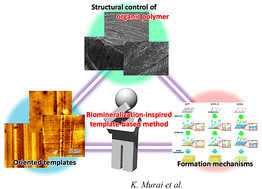
Mol. Syst. Des. Eng., 2024,9, 561-570
https://doi.org/10.1039/D4ME00023D
A physics-inspired approach to the understanding of molecular representations and models
By drawing on similarities between energy landscapes and model response surfaces we gain new insight into model performance, even in the absence of data.

Mol. Syst. Des. Eng., 2024,9, 449-455
https://doi.org/10.1039/D3ME00189J
Adsorption variations on the Ni(111) surface: electron density diversity from oxygen-containing functional groups
The disparities in adsorption stem from surface charge polarization effects, which may originate from the bond-order-induced effect, serving as a driving force to promote additional deoxygenation activities.
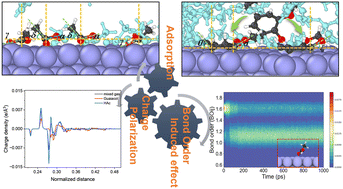
Mol. Syst. Des. Eng., 2024,9, 477-489
https://doi.org/10.1039/D3ME00168G
Rational design of antimicrobial peptides: an optimization approach
Discovery of new antimicrobial peptide sequences using a computer-aided inverse design framework.

Mol. Syst. Des. Eng., 2024,9, 311-322
https://doi.org/10.1039/D3ME00109A
CO2-switchable amidine-modified ZIF-90-stabilized Pickering emulsions for controllable Knoevenagel condensation reactions
CO2-responsive amidine-modified ZIF-90-stabilized Pickering emulsions are developed and used as a micro-reactor to achieve the coupling of Knoevenagel condensation, product separation and catalyst recycling via alternate CO2 bubbling or removing.

Mol. Syst. Des. Eng., 2024,9, 278-285
https://doi.org/10.1039/D3ME00167A
Evolution of free volume elements in amorphous polymers undergoing uniaxial deformation: a molecular dynamics simulations study
Amorphous polymers are considered promising materials for separation applications due to their excellent transport properties and low fabrication costs.

Mol. Syst. Des. Eng., 2024,9, 214-225
https://doi.org/10.1039/D3ME00148B
Cation/anion-exchange mode switching chromatography utilizing pH-responsive mixed charge polymer-modified silica beads
An environmental pH-sensitive cation/anion-exchange mode switching chromatography system was developed by utilizing a pH-responsive mixed-charge polymer.

Mol. Syst. Des. Eng., 2024,9, 56-62
https://doi.org/10.1039/D3ME00100H
Bio-inspired dry adhesive pads using multi-walled carbon nanotube/polydimethylsiloxane composites for efficient wafer transfer robot arms in smart factories
We report the bio-inspired dry adhesive pads (BDAPs) with various shapes and contact areas optimized for various robot arm movements. Moreover, MWCNT/PDMS composite-based BDAP (c-BDAP) has shown superior heat resistance and electrical conductivity.

Mol. Syst. Des. Eng., 2023,8, 1520-1525
https://doi.org/10.1039/D3ME00126A
Exploitation of active site flexibility-low temperature activity relation for engineering broad range temperature active enzymes
Can we modulate active site flexibility to engineer broad range temperature activity in thermophilic enzymes?

Mol. Syst. Des. Eng., 2023,8, 1355-1370
https://doi.org/10.1039/D3ME00013C
Unraveling the impact of template geometry and confinement on template-assisted self-assembly of nanoparticles
In templated self-assembly, nanoparticles are slotted far from and ahead of the receding contact line.

Mol. Syst. Des. Eng., 2023,8, 1075-1086
https://doi.org/10.1039/D3ME00024A
Molecular insights into the hydration of zwitterionic polymers
Using density functional theory, our study unravels how the charge distribution and zwitterionic units affect hydration of polymers, paving the way for materials-by-design for anti-icing polymers via molecular engineering.
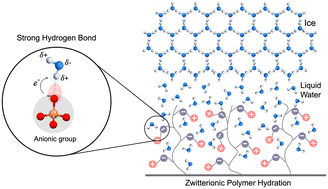
Mol. Syst. Des. Eng., 2023,8, 1040-1048
https://doi.org/10.1039/D3ME00020F
Network dynamics: a computational framework for the simulation of the glassy state
An out-of-equilibrium simulation method for tracking the time evolution of glassy systems (or any other systems that can be described by hopping dynamics over a network of discrete states) is presented.

Mol. Syst. Des. Eng., 2023,8, 1013-1029
https://doi.org/10.1039/D2ME00256F
Functionalisation of conjugated macrocycles with type I and II concealed antiaromaticity via cross-coupling reactions
Halogenated paracyclophanetetraenes (PCTs) for the integration of the PCT motif into larger conjugated molecules by cross-coupling reactions are introduced.

Mol. Syst. Des. Eng., 2023,8, 713-720
https://doi.org/10.1039/D3ME00045A
Electron and ion transport in semi-dilute conjugated polyelectrolytes: view from a coarse-grained tight binding model
Electronic transport properties of semidilute conjugated polyelectrolytes are predicted using a quantum mechanical (QM) transport model parameterized using coarse grained (CG) morphologies derived from molecular dynamics simulations.

Mol. Syst. Des. Eng., 2023,8, 743-755
https://doi.org/10.1039/D2ME00285J
Polyelectrolyte complex scaffoldings for photocrosslinked hydrogels
Self-assembled polyelectrolyte complex-based scaffoldings to address the limitations and enrich the microstructure and the mechanical properties of photocrosslinked hydrogels.

Mol. Syst. Des. Eng., 2023,8, 611-623
https://doi.org/10.1039/D2ME00171C
Oxidative degradation of sequence-defined peptoid oligomers
Adaptable degradative responses to multiple biological stimuli are of great importance for biorecognition. Here, enzymatic and ROS degradability are tuned by monomer identity and sequence in a series of sequence-defined oligomers.
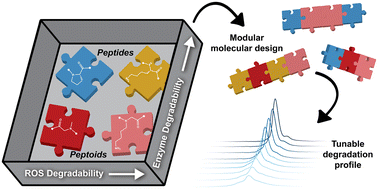
Mol. Syst. Des. Eng., 2023,8, 92-104
https://doi.org/10.1039/D2ME00179A
Molecular design of a series of gemini-type zwitterionic amphiphiles with various linker lengths: control of their self-organisation for developing gyroid nanostructured proton conductive membranes
We have developed our strategy to create gyroid nanostructured polymer membranes having a 3D continuous proton conduction pathway.
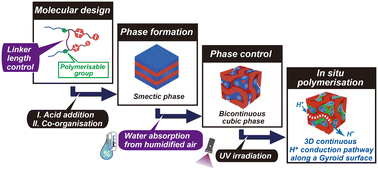
Mol. Syst. Des. Eng., 2022,7, 1459-1466
https://doi.org/10.1039/D2ME00069E
Effects of nanoaggregation on isoindigo-based fluorophores for near-infrared bioimaging applications
This work provides fascinating insights into NIR fluorophore design and methods to effectively alter the photophysical and morphological properties of the nanoaggregates for bio-imaging purposes.
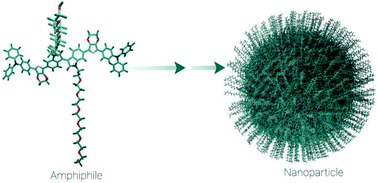
Mol. Syst. Des. Eng., 2022,7, 906-914
https://doi.org/10.1039/D2ME00014H
Featurization strategies for polymer sequence or composition design by machine learning
In this work, we present, evaluate, and analyze strategies for representing polymer chemistry to machine learning models for the advancement of data-driven sequence or composition design of macromolecules.
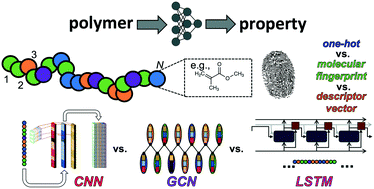
Mol. Syst. Des. Eng., 2022,7, 661-676
https://doi.org/10.1039/D1ME00160D
Heterogeneous protein co-assemblies with tunable functional domain stoichiometry
The distinct peptide strands of a heterotrimeric α-helical coiled-coil can be used as fusion tags to mediate heterogeneous co-assembly of proteins into supramolecular complexes with tunable subunit stoichiometry.
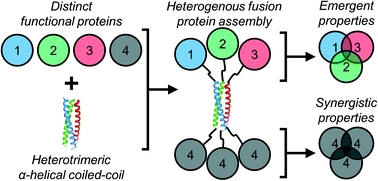
Mol. Syst. Des. Eng., 2022,7, 44-57
https://doi.org/10.1039/D1ME00083G
SARS-CoV-2 spike protein N501Y mutation causes differential species transmissibility and antibody sensitivity: a molecular dynamics and alchemical free energy study
Computational study reveals that the N501Y mutation alters host recognition to human and cat ACE2 in diverged scenarios, which is attributed to the competition of favorable hydrophobic packing versus unfavorable steric hindrance.
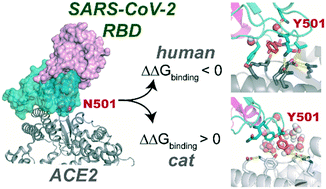
Mol. Syst. Des. Eng., 2021,6, 964-974
https://doi.org/10.1039/D1ME00086A
Alkylation of poly-substituted aromatics to probe effects of mesopores in hierarchical zeolites with differing frameworks and crystal sizes
Kinetic analysis of alkylation of 1,3,5-trimethylbenzene with benzyl alcohol and accompanying secondary reactions provides insight into reaction–diffusion–deactivation of bulky polyaromatic moieties in hierarchical zeolites.
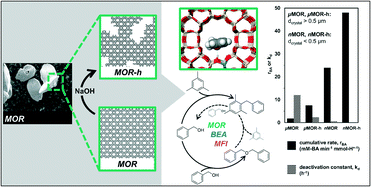
Mol. Syst. Des. Eng., 2021,6, 903-917
https://doi.org/10.1039/D1ME00062D